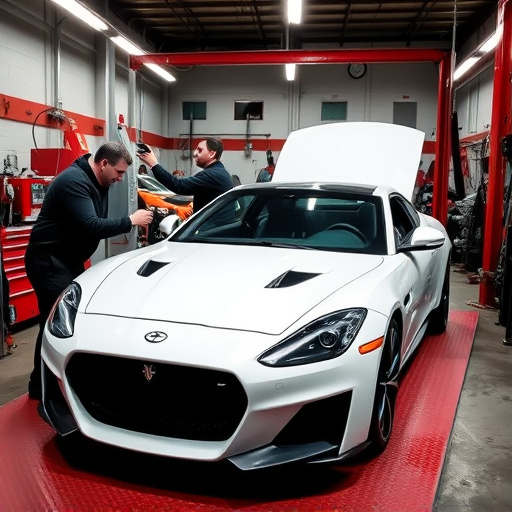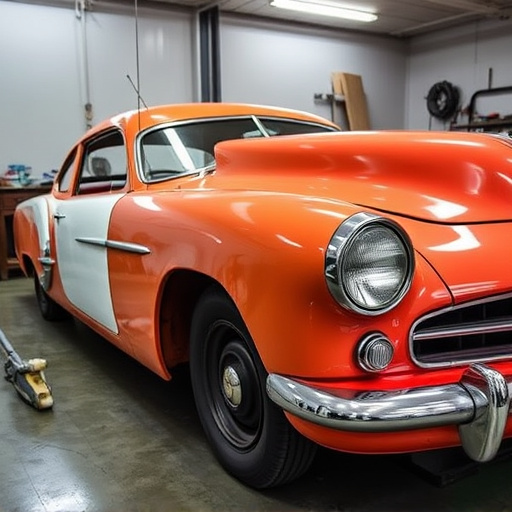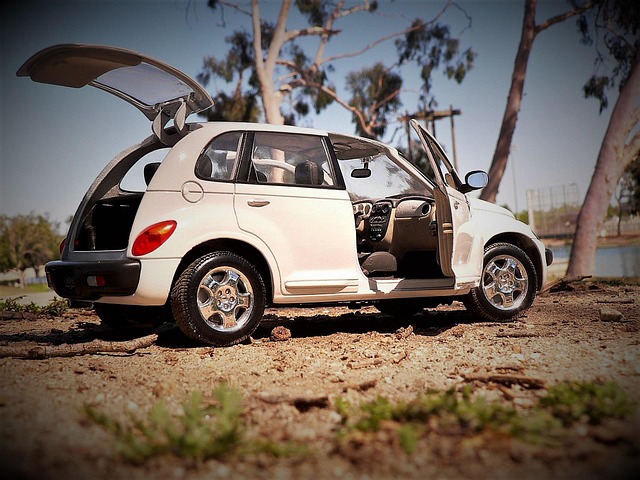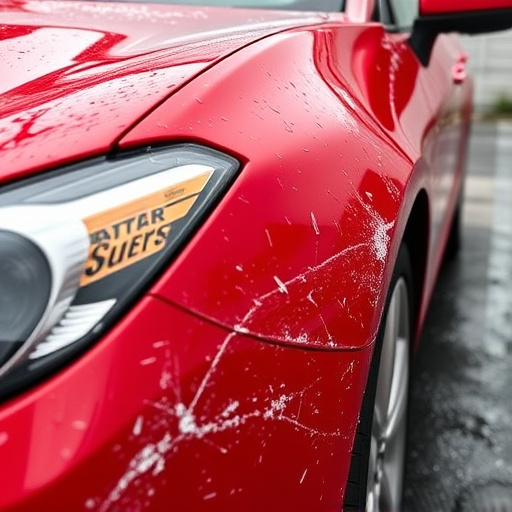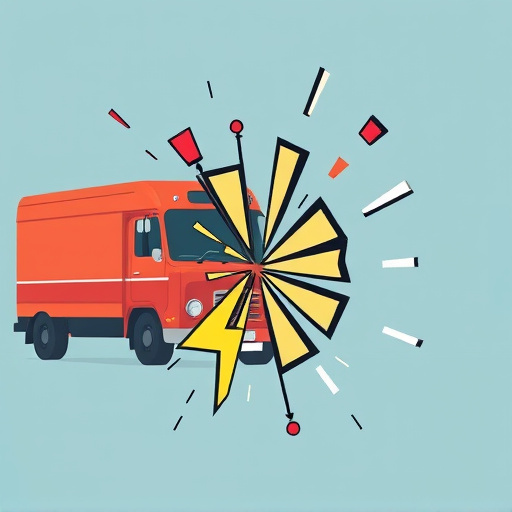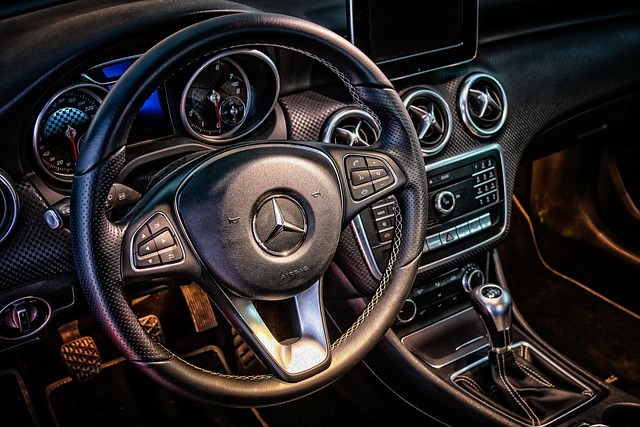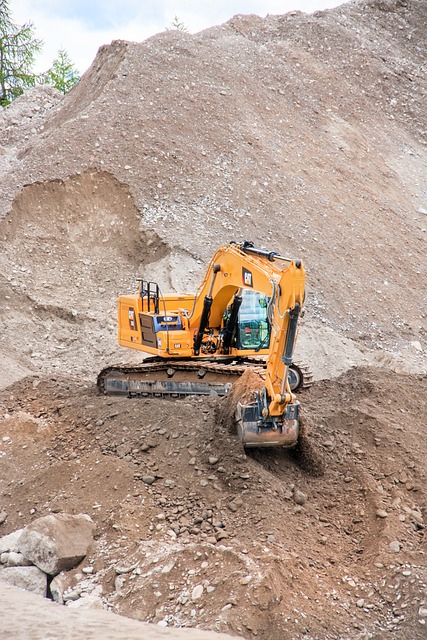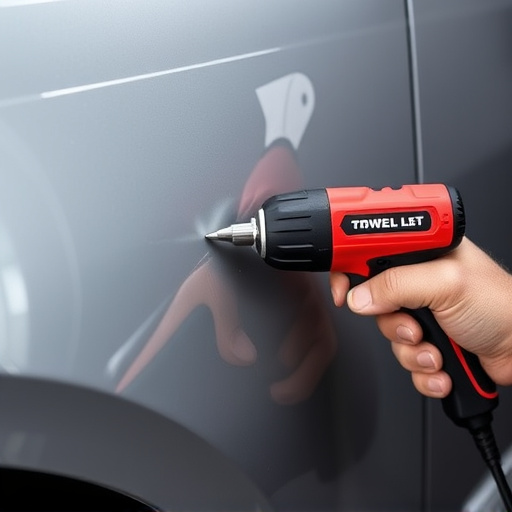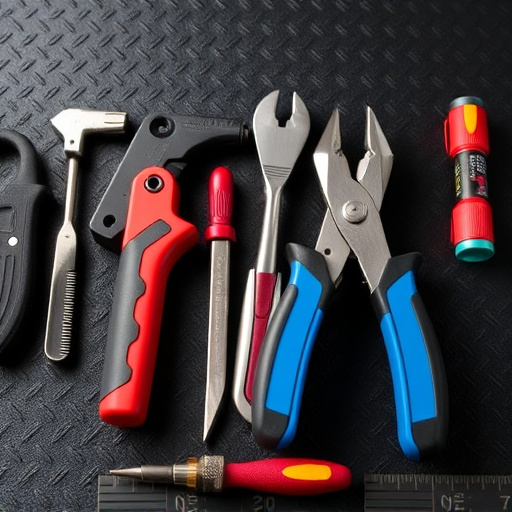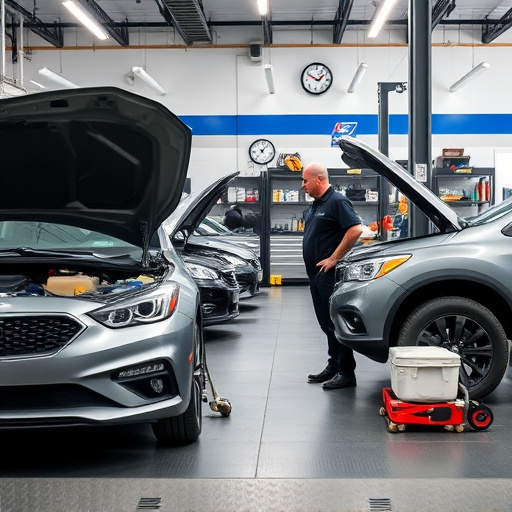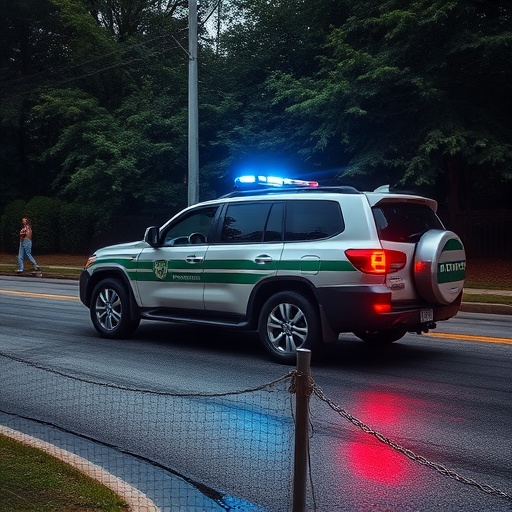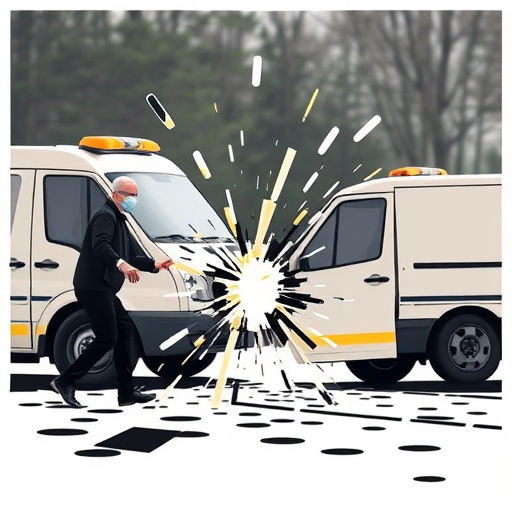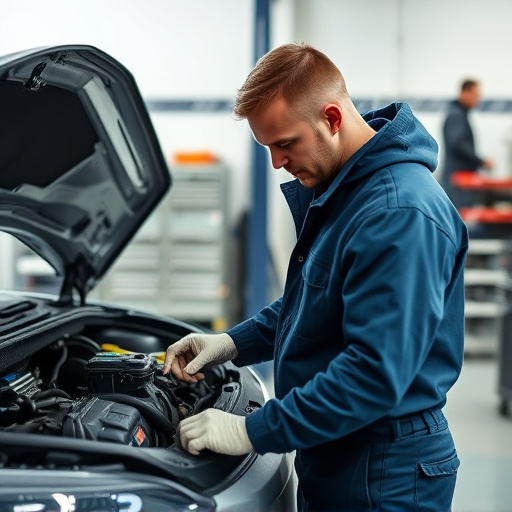Tesla collision diagnostics are essential tools for ensuring high-quality repairs on electric vehicles. They enable detailed damage assessment, from minor dents to complex structural issues, guiding precise frame straightening and body repair. This process enhances collaboration between owners and repair facilities, simplifying pre-repair authorizations, cost estimates, and turnaround times. By leveraging Tesla collision diagnostics, certified centers offer top-notch, longevity-focused repairs through early engagement, transparent communication, adherence to manufacturer standards, and effective partnerships.
Tesla vehicles, known for their cutting-edge technology, offer a unique approach to collision repair through advanced collision diagnostics. Understanding this process is key to ensuring high-quality repairs. This article delves into the world of Tesla collision diagnostics and pre-repair work authorization, guiding owners through the benefits and best practices. By grasping these concepts, Tesla owners can efficiently navigate collision repair, ensuring their vehicles return to their optimal state, powered by precise diagnostics.
- Understanding Tesla Collision Diagnostics: The Foundation of Quality Repairs
- Pre-Repair Work Authorization: A Crucial Step in the Tesla Service Process
- Navigating the Benefits and Best Practices for Efficient Collision Repair Authorization
Understanding Tesla Collision Diagnostics: The Foundation of Quality Repairs

Tesla collision diagnostics play a crucial role in ensuring quality repairs for electric vehicle owners. These advanced systems are designed to meticulously assess and pinpoint damage, providing an accurate foundation for the restoration process. By employing state-of-the-art technology, Tesla’s diagnostic tools capture every detail of a vehicle’s condition, from subtle dents to complex structural issues. This comprehensive evaluation is essential in achieving precise frame straightening and car body repair, which are vital aspects of auto body work when restoring a Tesla to its pre-collision condition.
Understanding the intricacies of Tesla collision diagnostics empowers both repair specialists and owners. It facilitates efficient pre-repair work authorization by providing clear insights into the extent of damage, allowing for more accurate cost estimates and faster turnaround times. This level of transparency builds trust between service centers and clients, ensuring that every step of the repair process adheres to the highest standards.
Pre-Repair Work Authorization: A Crucial Step in the Tesla Service Process

In the realm of Tesla collision diagnostics, Pre-Repair Work Authorization stands as a pivotal step in the service process. Before any repairs are initiated at an automotive body shop or collision repair center, this authorization ensures that both parties—the vehicle owner and the repair facility—are aligned on the scope of work, cost estimates, and desired outcomes. It’s not merely a formality; it’s a safeguard for Tesla owners, ensuring they understand and approve every aspect of the restoration process.
This crucial step involves careful examination of the vehicle by qualified technicians who meticulously document existing damage, ranging from minor car scratch repairs to more intricate body work. Once completed, a comprehensive report is provided to the owner, detailing potential repair options, timelines, and associated costs. Armed with this knowledge, Tesla owners can make informed decisions, selecting the path that best suits their needs and budget.
Navigating the Benefits and Best Practices for Efficient Collision Repair Authorization
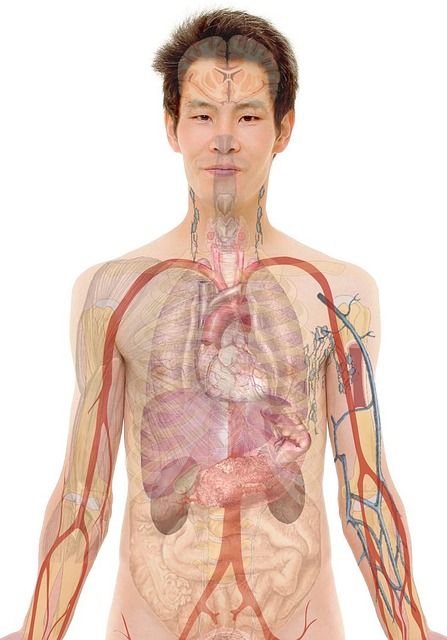
Navigating the process of collision repair authorization for Tesla vehicles involves understanding the benefits of advanced diagnostics and best practices to ensure efficient vehicle restoration. Tesla collision diagnostics play a crucial role in this journey, offering precise assessments of car damage repair needs. By utilizing sophisticated technology, these diagnostics provide detailed insights into the extent of the collision, enabling authorized repair centers to accurately estimate costs and timeline for car damage repairs.
Best practices involve early engagement with certified collision repair centers, who can expertly interpret Tesla collision diagnostics reports. This partnership ensures a smooth transition from assessment to pre-repair work authorization, minimizing downtime and maximizing vehicle longevity. Effective communication, transparent cost breakdowns, and adherence to manufacturer standards are key to achieving optimal results in the collision repair process, ultimately delivering top-notch vehicle restoration services.
Tesla collision diagnostics play a pivotal role in ensuring quality repairs, with pre-repair work authorization serving as a critical step in the service process. By leveraging advanced diagnostic tools and following best practices, collision centers can streamline the authorization process, enhance efficiency, and deliver superior customer experiences. Understanding these fundamentals is key to navigating the Tesla service landscape effectively.
